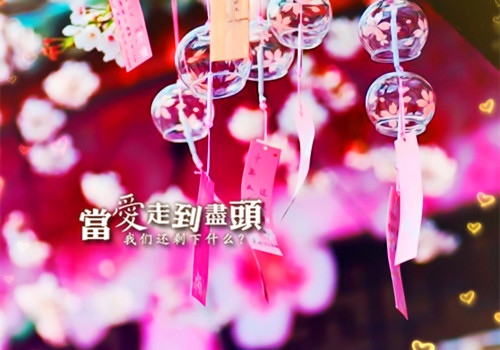
求英文导游词,西安钟楼里大钟的细节描写和历史,不要太多,突出特点就行。
钟楼附近是在西安市区转的方便点,到附近(比如兵马俑华清池或者壶口瀑布)的话,最好在火车站附近住
陕西西安古城墙英语导游词
The City Wall of Xi'an is one of oldest existing Chinese city wall. It is based in Xi'an, an ancient capital of China.194 BCE: Construction of the first city wall of Chang'an began, which did not finish until 190 BCE. The wall measured 25.7 km in length, 12-16 m in thickness at the base. The area within the wall was ca. 36 km2. 1370: Ming Dynasty built a new wall to protect a much smaller city of 12 km2. The wall measures 11.9 km in circumference, 12 m in height, and 15-18 m in thickness at the base.
西安历史博物馆导游词 英文
我是找了相关资料,然后在在线翻译上翻过来的,没有时间能够细细帮你修改,要是用的成的话,还是找个好英语的帮你修改一下费力啊,哈哈,希望能帮上忙
Shaanxi History Museum is a state-level large-scale modernization of the museum is a magnificent Tang-style building, covers an area of about 70,000 square meters, construction area of over 50,000 square meters. It brings together the culture of Shaanxi, shows the development of Chinese civilization, Shaanxi Province in China in view of the history of the status of the state to invest a total of 144,000,000 yuan for the construction of the Shaanxi Museum of History, in June 1991 completion and opening. Flavor Architecture Museum, unique. It classical Chinese palace architecture and garden architecture closely together, coordinating colors, reflecting the traditional Chinese architectural style, at the same time with local characteristics and the spirit of the times. Museum of Shaanxi Province unearthed antiques 113,000 (Group) showroom area of 1100 square meters, at the prehistoric, Zhou, Qin, Han, Wei, Jin and Southern and Northern Dynasties and the Sui and Tang Dynasties, Song, Yuan, Ming and Qing Dynasties most of the seven, the image display system from 115 Million years ago until the year 1840, Shaanxi's history. In Chinese history, there have been 11 dynasties established their capitals in Shaanxi Province and will last for 1,000 years, is the capital of China's most Dynasty, the longest of the capital region, from a certain point, the ancient history of Shaanxi is China's history Enrichment. ● features: Museum of Shaanxi Province in ancient China into the palace courtyard with the architectural style in one, dignified and elegant, generous simplicity, the layout of coordination, the great momentum, reflecting the ethnic and local characteristics, the Library has central air-conditioning, lighting systems, multi-purpose use Computer management system and the central control system. Heritage and the Treasury have modern languages with simultaneous interpretation function Hall. ● Shaanxi Museum of History of the Tang Dynasty architectural style succession of powerful broad, dignified and elegant style, from traditional Chinese palace axis of symmetry, the master-slave in an orderly manner, the central hall, Si Yu Chong-floor, the layout of the form and at the same time the use of modern advanced technology to China's Sheng Tang period classical architectural style with modern requirements of the museum features combined into one, has managed to maintain the old style with modern features. The roof of the Tang Dynasty used the prevalence of gray green glazed tile, Wah Kwai appears to be a solemn, simple person, wall materials like asbestos tiles,Doors and windows are tinted using large pieces of glass and aluminum framework, the Library can be equipped with temperature and humidity control of the closed central air-conditioning system of multi-functional lighting systems, automatic fire alarm systems, computer-controlled management system; heritage with science and technology center With-the-art laboratory to test repair techniques and means of protection. To enhance cultural exchange between China, has computer-controlled and have 300,000 books in the library and 6-language simultaneous interpretation of international academic Hall. In addition, there are facilities for cultural relics libraries, library, shopping and so on. ● collections: the Museum's collection of historical relics unearthed in Shaanxi 370,000 fine, visitors can enjoy prehistoric, Zhou, Qin, Han, Wei, Jin and Southern and Northern Dynasties, Sui, Tang, Song, Yuan, Ming and Qing from 115 million years ago to Year in 1840 between the Shaanxi Cultural Relics. ● Structure: galleries with a total area of 11,000 square meters, to display the basic points, and temporary exhibits on display feature three parts, on display ancient history of Shaanxi, Shanxi Bronze Exhibition, Shaanxi show the essence of ancient pottery and domestic Tangmu murals show the most real thing Attractive. ● into the hall of the museum, in the face of huge photographs to show people Pentium Miangen roar of the Yellow River and the vast loess plateau. This is the birth of the breeding history and culture of Shaanxi's geographical location. Shaanxi Yellow Earth's history is the history of civilization. Heads held high standing in the central hall of the giant lion is the symbol of civilization. Its grand design, the surging momentum, the beautiful stone, Hongik Univ of vision, called Eastern Lions in the first.This is the first in the history of Chinese stone lions from the only female Emperor Wu of Young's mother, Ling-shun. Ancient Chinese lion and the lion sculpture art from Afghanistan into Central Asia's strange romance with the immense depth of East Asia here so perfectly integrated into one, embodies the history and culture of Shaanxi tone.Nearly 1,500 m of exhibition by the basic line on display, special and temporary exhibits on display consists of three parts. Museum is located in the central up and down two floors to display the basic meta-historical relics unearthed in Shaanxi Province of the essence, the display of more than 3,000 pieces of rare treasures unearthed in Shaanxi from the hundreds of thousands of cultural relics selected from a number of precious cultural relics here from the public for the first time in World Bank, sub-prehistoric, Zhou, Qin, Han, Wei, Jin and Southern and Northern Dynasties and the Sui and Tang Dynasties, Song, Yuan, Ming and Qing Dynasties most of the seven, the image display system, from 115 million years ago by the year 1840, Shaanxi's ancient history, and a number of important people understand the Shaanxi Archeology The basic Han four Wadang God (Suzaku) diameter of 15.8 cm, 2 cm wide margin round, Shaanxi Han Chang'an City ruins unearthed. Suzaku unloading the Pearl of the mouth, head Qiao Mei, the more dignified and powerful Meng, the sacred abnormal. Now in the possession of the Shaanxi History Museum. 陕西历史博物馆是国家级现代化大型博物馆,是一组雄伟壮观的仿唐建筑群,占地约7万平方米,建筑面积5万多平方米。
它汇集了陕西文化精华,展现了中华文明的发展过程,鉴于陕西在中国历史上的地位,国家共投资1.44亿元人民币,兴建了陕西历史博物馆,于1991年6月建成开放。
博物馆建筑古朴典雅,别具特色。
它将中国古典宫殿建筑和庭院建筑紧密地结合在一起,色彩协调,体现了中华民族的传统建筑风格,同时具有地方特色和时代精神。
博物馆珍藏了陕西出土的文物精品11.3万件(组)展室面积达1100平方米,分史前、周、秦、汉、魏晋南北朝、隋唐、宋元明清七大部分,形象系统地展现出自115万年以前至公元1840年的陕西历史。
在中国历史上,曾经有11个朝代在陕西建都,历时1000多年,是我国建都王朝最多,建都时间最长的地区,因此,从某种角度来说,陕西古代史是中国历史的浓缩。
●特点:陕西省博物馆融中国古代宫殿与庭院建筑风格于一体,典雅凝重,古朴大方,布局协调,气势宏伟,体现了民族风格和地方特色,馆内设有中央空调、多功能照明系统,采用计算机管理系统和中央控制系统。
设有现代化文物库房和具备多种语言同声传译功能的报告厅。
镶金玉镯 ●陕西历史博物馆建筑造型继承唐代博大雄浑、典雅凝重的风 格,借鉴我国传统宫殿“轴线对称,主从有序,中央殿堂, 四隅 崇楼”的布局形式,同时运用现代先进技术,把我国盛唐时期古 典建筑风格与现代博物馆功能要求有机地结合为一体,既保持了 古老风貌,又有现代化的特点。
屋顶采用唐代盛行的灰绿色琉璃 瓦,显得华贵庄重,古朴大方,墙面材料为仿石棉砖,门窗则采 用大块茶色玻璃和铝合金框架,馆内配备可控制温湿度的全封闭 中央空调系统,多功能的照明系统,自动防火防盗系统,计算机 控制管理系统;设有文物保护科技中心,具有先进的化验、测试 技术和文物保护修复手段。
为加强中外文化交流,建有电脑控制 并拥有30万册藏书的图书馆和6国语言同声传译的国际学术报 告厅。
此外,还有设施完善的文物库、资料室、购物中心等。
●珍藏:馆内珍藏了陕西出土文物精品37万件,游客可欣赏到史前、周、秦、汉、魏、晋、南北朝、隋、唐、宋、元、明、清自115万年前到公元1840年间的陕西历史文物。
●结构:展室总面积达11000平方米,分基本陈列、专题陈列和临时陈列三大部分,其中陕西古代史陈列、陕西青铜器珍品展、陕西历代陶佣精华展和唐墓壁画真品展最具吸引力。
●进入博物馆大厅,迎面巨幅照片向人们展现出奔腾咆哮的黄 河和绵亘无垠的黄土高原。
这是孕育诞生陕西历史文化的地理环 境。
陕西的历史是黄土地文明的历史。
昂首屹立在大厅中央的巨 狮是这种文明的标志。
它造型雄伟,气势澎湃,石刻之精美,气 魄之弘大,堪称“东方第一狮”。
这头石狮来自中国历史上唯一的 女皇帝武则天母亲杨氏的顺陵。
中国古代的狮子及狮子雕刻艺术 由阿富汗传入,中亚的浪漫奇特与东亚的深沉浑厚在这里如此完 美地融合为一体,集中体现了陕西历史文化的基调。
近1500米的展线由基本陈列、专题陈列和临时陈列三部分组 成。
位于博物馆中央上下两层的基本陈列荟萃了陕西出土文物的 精华,展出的3000余件稀世珍品从陕西出土的几十万件文物中精 选而来,许多珍贵文物在这里首次公诸于世,分史前、周、秦、汉、 魏晋南北朝、隋唐、宋元明清七大部分,形象系统地展现出自115 万年前至公元1840年的陕西古代历史,并使人们了解陕西一些重 要考古遗址的基本面貌。
汉·四神瓦当(朱雀) 直径15.8厘米,边轮宽2厘米,陕西汉长安城遗址出土。
朱雀口卸宝珠,昂首翘尾,更显得威严势猛,神圣异常。
现藏于陕西历史博物馆。
求一篇陕西英语导游词
The City Wall of Xi'an is one of oldest existing Chinese city wall. It is based in Xi'an, an ancient capital of China.194 BCE: Construction of the first city wall of Chang'an began, which did not finish until 190 BCE. The wall measured 25.7 km in length, 12-16 m in thickness at the base. The area within the wall was ca. 36 km2. 1370: Ming Dynasty built a new wall to protect a much smaller city of 12 km2. The wall measures 11.9 km in circumference, 12 m in height, and 15-18 m in thickness at the base. 这是陕西西安古城墙的导游词
应该对吧
以:假如你是一位导游,介绍西安为题写一篇英语作文50词,翻译'
、钟楼和鼓楼今天我们将去参观、钟楼和鼓楼。
很荣幸能为大家服务。
我们现在看到的这座古城堡就是明,是明初在唐长安皇城的基础上建筑起来的。
它是我国中世纪后期历史上最著名的城垣之一,是世界上现存规模最大、最完整的古代军事城堡防御设施。
西安作为千年古都,历代曾多次修筑城墙。
它们多数被历史的尘埃掩埋。
我们现在看到的城墙可追溯到隋代。
公元1369年,明王朝大将从山西进入陕西,将原来的奉天路改为西安,意为“西方”。
拉开了明在西安修筑城墙的序幕。
历时8年修筑完的城墙外形是一座长方形。
城墙高15米,顶宽12—14米,底宽16—18米,周长13.9公里。
最底层用黄土与石灰、糯米汁拌合而成,干燥之后,异常坚固。
包括护城河、吊桥、闸楼、箭楼、正楼、角楼、敌楼、女儿墙、垛口等一系列军事设施。
好了,现在让我们亲自来感受这座科学、严密、完整的军事防御体系。
城墙最外围是护城河,也叫“城壕”,是城墙的第一道防线。
它可以阻滞敌人进攻,甚至可以利用有利地形把敌人趁机消灭。
环绕西安城墙的护城河宽20米,跨过护城河就是城门,而连接护城河与城门的唯一通道就是吊桥。
平时,守城士兵听从晨钟暮鼓的指挥,早晨降下吊桥,开启城门;晚上升起吊桥,断绝交通。
一旦发生战争,吊桥升起,城门紧闭,城门就成为坚固封闭的战斗堡垒。
城门是城防体系的重点,也是薄弱点。
平时,它是出入城市的通道。
战争时,又是攻守双方争夺的首要目标。
因此,明代十分重视完善城门防御设施。
尤其值得注意的一大技术突破是采用了券拱式城门,以防止敌人火攻。
明西安城的城门非常坚固,门扇用厚达16厘米的木板制成,一扇城门用木材2.8立方米,门扇上下横匝着铁条加固,每两道铁条的间隔处,钉有180枚铁蘑菇针。
整个门扇上共有1800枚铁蘑菇针。
这样就挤密了门扇的木材,增加了门扇刚度,使箭矢无法射入。
为了提高城门防御的保险系数,城门实际上由三重组成,即:闸楼、箭楼和主楼。
闸楼在最外,它的作用是升降吊桥。
兼用来打更。
敌人攻入闸楼城门,好似进入瓮内,会受到来自四面居高临下的攻击,因此楼下这一空间也叫“瓮城”。
箭楼在正中,正面和两侧都有窗户,供射箭用。
箭楼与箭楼之间用围墙连接起来的也叫“瓮城”,可屯兵。
正楼在最里,正楼上面的城楼是城门的主体建筑,是主将镇守指挥所在。
城墙外侧,每隔120米有一个突出于城墙主体之外的敌台,俗称“马面”。
整个城墙上共有“马面”98座,“马面”上面的建筑叫敌楼,两个敌台之间相距120米,而它的一面为60米,为“一箭之遥”。
这样的布局便于从侧面射杀攻城的敌人。
因此,古人有评论说:“有城无台,亦如无城,是城所以卫人,台又所以卫城也。
”。
城墙上外侧有矮雉,又称“垛墙”,上有垛口和方孔,可供射箭和嘹望。
内侧的矮墙称为“女儿墙”,是为了防止士兵行走时坠入墙下。
在西安城墙四角各有一座城楼叫“角楼”。
在箭楼与正楼形成的瓮城中,有通向城头的马道,便于战马上下。
战争期间,这里是调兵遣将的咽喉要道,必须保证。
因此守卫异常严格。
随着岁月的变迁,现在我们可以看到西安城墙的长乐门、安定门、朱雀门、含光门、玉祥门等等,这些名称的来历也从一个侧面反映了古城沉浮衰兴。
明西安城墙显示了我国古代劳动人民的聪明才智,好了,西安城墙就参观到这里,我们将继续带大家去参观钟鼓楼。
钟楼和鼓楼是古代中国城市的特有建筑。
钟与鼓本是中国最早出现的打击乐器,有3000年以上的历史。
最初作为礼器和乐器。
大约自,开始用于军事指挥。
古代中国城市兼有军事城堡性质,除城市四周构筑城墙,挖掘城壕,设置吊桥外,与之配套的还有在城市中心修筑钟鼓楼作为指挥中枢。
平时以晨钟暮鼓报告时辰,定时启闭吊桥,紧急状态时用以报警戒严,指挥城防。
这种严密的城市防御系统在明代发展到顶峰。
西安是明代西北军政重镇,它的钟楼和鼓楼无论从建筑规模、历史价值或艺术价值各方面衡量,都居全国同类建筑之冠。
我们现在看到的这座建筑就是钟楼,位于西安市东西南北四条大街的交汇处,它建于明洪武十七年,最初位于西大街的迎祥观,随着城市中心的东移,到了万历10年,将钟楼来了个整体拆迁,迁至今址。
钟楼呈典型明代建筑艺术风格,楼高36米,重檐斗拱,华丽庄严。
由基座,楼身和楼顶三部分组成。
基座是正方形,全部用青砖砌成。
楼身为正方形木质结构,外面以回廊环绕,里面为二层楼,楼内有木梯盘旋而上。
楼内上下两层正方形大厅里,陈列着明代以来各种名贵瓷器及红楠木家具,四面门上布满浮雕画,风格厚朴生动。
楼顶为四角攒尖结构,上面覆盖着碧绿色的琉璃瓦,顶端大圆顶高5米,金光闪闪,辉煌灿烂。
钟楼的西北角上陈列着一口明代铁钟,重5吨,钟边铸有八卦图案。
它比钟楼早先悬挂的铜钟小得多。
钟楼原先悬挂的巨钟是唐代景云年间铸造的“景云钟”。
现在这口钟收藏于。
据说,钟楼从迎祥观迁到今址后,虽然楼的式样大小并没有改变,但景云钟却怎也敲不响了。
没有办法,只有另换。
为了将景云钟移到新建的钟楼上,当年在西大街西段搭起一座斜桥,利用桥面斜坡把景云钟运到了钟楼上。
据说“桥梓口”也因此而得名。
钟楼内西墙上嵌刻有和碑刻。
是当年修建钟楼的陕西巡抚龚懋贤在解职赴京时登楼所赋。
诗中对钟楼做了热情的赞颂。
是督修过钟楼的巡抚张楷所作,详细记述了钟楼的身世。
在钟楼的门上有木刻浮雕故事画共64幅,其中有木兰从军、嫦娥奔月、柳毅传书、八仙过海等等。
建国后,西安市人民政府又对钟楼进行了三次大规模修葺,使这座古建筑又焕发了昔日的风采。
与钟楼遥遥相对的是鼓楼,楼底门洞为南北向,北通北院门,南达西大街。
鼓楼建于明洪武十三年,与钟楼是姊妹楼。
在鼓楼的第一层北面有一面巨鼓,与钟楼上的晨钟形成暮鼓,所以称为鼓楼。
楼体呈长方形,基座的门洞高与宽均为6米,洞深38米。
鼓楼建筑为重檐歇山式,琉璃瓦覆顶,重檐三滴水。
楼分上、下两层。
南北檐下各有一块匾,南为清乾隆皇帝御笔刻书:“文武盛地”,北为咸宁县书生李允宽书写“声闻于天”。
在鼓楼的外檐都饰有斗拱,四面有回廊。
天花板上油漆彩绘云形图案,古色古香,十分美丽。
钟鼓楼交相辉映,使古城西安更加美丽壮观。
好了,钟鼓楼的参观到这里就结束了。
谢谢大家
八路军办事处 西安办事处 英文导游词
八路军办事处 八路军安办事处是1937年至1946年期间,我党我军设在国民党区的一个的合法机构。
它的主要任务是:宣传党的抗日主张,开展抗日民族统一战线工作;招收和输送进步青年去延安,壮大革命力量;为陕甘宁边区和抗日前线领取、转运和采购战争物资。
今天的八路军西安办事处旧址位于西安市北新街七贤庄。
1936年12月西安事变和平解决后,中国共产党在西安市七贤庄一号设立了“红军联络处”,1937年抗日民族统一战线成立后,红军改编为国民革命军第八路军,“红军联络处”也改名为“八路军驻陕办事处”。
先后由林伯渠、董必武同志任党代表。
八路军驻陕办事处旧址包括七贤庄一、三、四、七号院。
为了向人民群众进行革命传统教育,1959年将一号院修复原貌,建为八路军西安办事处纪念馆,纪念馆包括当年的接待室会客厅、办公室、党代表室、救亡室、机要室、地下室和在此工作及来此居住的老一辈无产阶级革命家的住室等建筑,陈列了大量的文件、证章、电台、书刊、新闻图片和烈士手稿、照片等革命文物,生动具体地介绍了办事处成立的经过、历史任务、办事处同志工作学习和与敌人作斗争的情景,成为人们参观学习的革命旧址。
党中央领导人林伯渠、刘少奇、朱德、周恩来、叶剑英、等先后都在办事处居住过,如今有的居室己恢复原貌。
经念馆内还展出了当年的重要文件、手稿、书刊、照片和实物。
七贤庄一号院坐北朝南,西临西新街,前后共有四幢平房,形成三个相连的四合院,建筑面积4500平方米。
进门后,东侧接待室当年用来接待来访的各界人士和各地奔赴延安的进步爱国青年;西侧汽车房,陈列当年办事处使用的美国造“雪弗莱”卧车,办事处曾用它为延安转送重要物资。
第二幢平房内有周恩来、朱德、刘少奇、叶剑英、即印度援华医疗队的旧居。
从这幢房子向北,绕过厨房、理发室和水井,第三幢房子有当年的机要室、救亡室、译电室、电台、地下室、处长室、党支部办公室以及白求恩大夫、彭德怀同志旧居。
第四幢平房室当年办事处工作人员的住宅。
陕西省西安市八路军办事处旅游提示: 地理位置:位于西安市北新街七贤庄 公交路线:乘4、9、10、11、102、103、610、703路公共汽车北新街站下车。
Office of the Eighth Route Army in Xi'an Xi'an is the Office of the Eighth Route Army in 1937 to 1946, our party and our army in the rule of the Kuomintang in an open area of the legitimate institutions. Its main task is to: promote the party's anti-Japanese ideas, to carry out anti-Japanese national united front work; to recruit young people to progress and distribution of Yan'an, the revolutionary forces grow; for the Shaanxi-Gansu-Ningxia Border Region and the anti-Japanese front-line to receive, transfer and procurement of war material. Today, the Eighth Route Army in Xi'an at the former site of the Office of the Xi'an Seven Sages John Street North. In December 1936 after the peaceful settlement of the Xi'an Incident, the Communist Party of China in Xi'an Seven Sages One village has set up a liaison office of the Red Army in 1937 after the establishment of the anti-Japanese national united front, the Red Army into the Eighth Route Army section of the National Revolutionary Army, the Red Army liaison Department has changed its name to Office of the Eighth Route Army Zhu Shan. One after another by Lin Boqu, Comrade Dong any party. Zhu Shan, including the former site of the Eighth Route Army Office of the Seven Sages of a village, three, four, on the 7th House. In order to conduct the people's revolutionary tradition of education, in 1959 I will repair the original house, built for the Eighth Route Army Office of the Xi'an museum, the museum's reception room that year, including the drawing room, office, party room, a rescue room, confidential room in the basement And in this work and to live in the older generation of proletarian revolutionaries such as the construction of the living room, displaying a large number of documents, badge, radio, magazines, news and pictures of the martyrs manuscripts, photographs, and other revolutionary relics, vivid description of the specific things After the establishment of the Department, the historical task of study and the work of the Office of the comrades in the fight against the enemy and the scenes become a study tour of the former site of the revolution. Lin Boqu leaders of the CPC Central Committee, Liu Shaoqi, Zhu De, Zhou Enlai, Ye Jianying, Deng Xiaoping, has lived in the offices, now has some room to restore the original appearance. After studying the Library will also be on display when the important documents, manuscripts, books, photos and in-kind. Seven Sages One village homes sit south and west of the new West Street, before and after a total of four houses connected to the formation of the three courtyard, 4500 square meters floor area. After the door, on the eastern side of the reception room was used to receive visitors from all walks of life of those who went to Yan'an and all over the progress of patriotic youth; the west side of the garage, then display the use of the Office of the United States made Chevrolet sleeping car, had to use it for offices Yan'an transferred to the important material. The second building houses with Zhou Enlai, Zhu De, Liu Shaoqi, Ye Jianying, Deng Xiaoping's Aid to China that India's old team. From the house to the north, bypassing the kitchen, a barbershop and wells in the third house there was a confidential room, a rescue room, electrical room translation, radio, in the basement, Room Director, Office of the branches as well as the doctor Norman Bethune, Peng Old comrades. Room 000 was the fourth cottage staff of the Office of Residential. Office of the Eighth Route Army in Xi'an, Shaanxi Province travel tips: Location: Xi'an is located in North John Street, Seven Sages Bus route: take the bus 4,9,10,11,102,103,610,703 North Street Station and get off.
请问谁有陕西八大旅游景点的中英文对应的导游词啊
导游词,大都是当地旅游局分管培训导游部门编写的,如果方便可以到西安旅游局索要、或购买陕西导游词。
高中英文导游词作文一百词左右
Ladies and Gentlemen: I am pleased to serve as your guide today. This is the palace museum; also know as the Purple Forbidden City. It is the largest and most well reserved imperial residence in China today. Under Ming Emperor Yongle, construction began in 1406. It took 14years to build the Forbidden City. The first ruler who actually lived here was Ming Emperor Zhudi. For five centuries thereafter, it continued to be the residence of23 successive emperors until 1911 when Qing Emperor Puyi was forced to abdicate the throne. In 1987, the United Nations Educational, Scientific and Cultural Organization recognized the Forbidden City was a world cultural legacy.



